 |
|
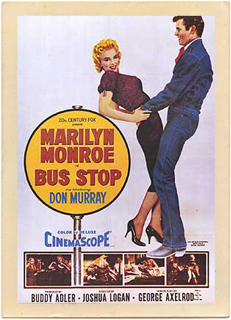 Bus Stop Bus Stop1956. 20th Century Fox, 20th Century Fox Home Entertainment, Color, Aspect Ratio 2.55 : 1, 96 minutes, Not Rated Release Date: August 31, 1956 Bus Stop is available at Amazon.com on DVD and VHS. Movie Synopsis: A young and naive cowboy travels to Phoenix, Arizona, to participate in a rodeo, where he meets and falls in love with a beautiful, “hillbilly chanteuse,” who he is determined to marry and take home to Montana. Cast: Marilyn Monroe, Don Murray, Arthur O’Connell, Betty Field, Eileen Heckart, Hope Lange, Robert Bray Director: Joshua Logan Thoughts on the Movie: Bus Stop is one of my favorite Marilyn Monroe movies. She was just so good in this. Her portrayal of Cherie, the Arkansas girl who dreams of being discovered in Hollywood, is truly one of her best performances. The movie is just a ball of fun from start to finish, even with some of the dramatic overtones that develop along the way. It never gets too heavy, although despite the humor, you have to feel a little sorry for almost all the folks who appear in this story. Honestly, you couldn’t pay me enough money to trade places with any of them, even the beautiful Marilyn... and she was absolutely at her height of sex symbol gorgeous in this one! Don Murray made a fabulous film debut as Beau, the sweet, bull-headed rodeo cowboy, and all the other supporting players were simply perfect (the lovely Hope Lange, also in her first film role, proved to be a nice touch). I used to watch Bus Stop on late night TV when I was a little girl, and I still love to cuddle up in bed with my dogs and watch this wonderful 1950s film classic. Marilyn’s an “angel” and Bus Stop’s a keeper. ~Jean 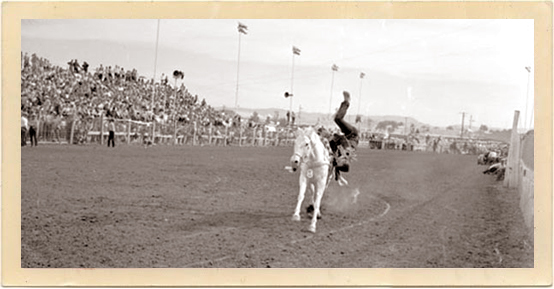 Location Site: Location Site:Arizona State Fairgrounds, Phoenix, Arizona (see Map) The scenes for the rodeo, that Beau performs in and Cherie watches, were filmed at the Arizona State Fairgrounds. Marilyn Monroe and Eileen Heckart “watched” the rodeo action from the grandstand. The Arizona State Fairgrounds, home to the Arizona State Fair, is located at 1826 W. McDowell Road, Phoenix, Arizona. Right: The rodeo in action at the Arizona State Fairgrounds in 1956; this was the setting for several scenes in the hit movie, “Bus Stop,” starring Marilyn Monroe and Don Murray. In November of 1884, a group of citizens in the territory of Arizona wanted to organize an event with the family in mind. The very first Arizona Territorial Fair was held in Phoenix in late fall, near the Salt River, west of Central Avenue. Fairgoers of the day were treated to horse, pony, and mule races, along with exhibits including agriculture, home economics, and dairy and beef cattle. The Fair was held here annually until 1891, when the untamed Salt River flooded and destroyed the site’s buildings and racetrack. 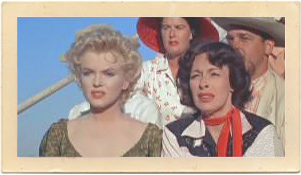 Reviving the Fair became the mission of a citizens’ group which formed the Arizona Territorial Fair Association in 1905. Financed by its members, the group, led by hotelier J.C. Adams, purchased the present location for $9,200. The Association immediately developed the property, adding two racetracks, a grandstand, and a wooden fence around the grounds. To aid the Association with their 80-acre development, the Territory of Arizona created a Fair Commission. With a legislative appropriation of $22,500, the Commission constructed two buildings on the property. Reviving the Fair became the mission of a citizens’ group which formed the Arizona Territorial Fair Association in 1905. Financed by its members, the group, led by hotelier J.C. Adams, purchased the present location for $9,200. The Association immediately developed the property, adding two racetracks, a grandstand, and a wooden fence around the grounds. To aid the Association with their 80-acre development, the Territory of Arizona created a Fair Commission. With a legislative appropriation of $22,500, the Commission constructed two buildings on the property.Right: Marilyn Monroe and Eileen Heckart sit in the Arizona State Fair rodeo grandstand during a scene from the 1956 classic film, “Bus Stop.” After renting the property from the Fair Association for $10 a year, the Fair Commission purchased the property in 1909, for $30,000. With statehood granted in 1912, the State Fair Commission continued the work of the Territorial Fair Commission in presenting the annual Fair. With the exceptions of 1921 (cotton crop failure), 1934 to 1939 (Depression era), and 1943 to 1945 (World War II), the Fair has been presented yearly. About Phoenix, Arizona: 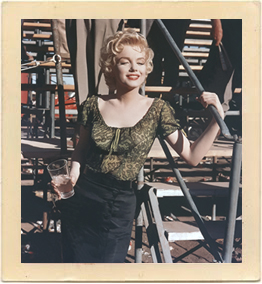 Phoenix, Arizona (population 1,445,632; elevation 1,117 feet; 33° 26’ 54” N, 112° 4’ 25” W) is located in the northeastern section of the Sonoran Desert, on I-25 and I-10. Phoenix is the capital of Arizona and is also the anchor of the Phoenix metropolitan area (also known as the Valley of the Sun), the 12th largest metro area by population in the United States with more than 4.1 million people. The Phoenix area is surrounded by the McDowell Mountains to the northeast, the White Tank Mountains to the west, the Superstition Mountains far to the east, and the Sierra Estrella to the southwest. Within the city are the Phoenix Mountains and South Mountains. Residents of the city are known as Phoenicians. Phoenix, Arizona (population 1,445,632; elevation 1,117 feet; 33° 26’ 54” N, 112° 4’ 25” W) is located in the northeastern section of the Sonoran Desert, on I-25 and I-10. Phoenix is the capital of Arizona and is also the anchor of the Phoenix metropolitan area (also known as the Valley of the Sun), the 12th largest metro area by population in the United States with more than 4.1 million people. The Phoenix area is surrounded by the McDowell Mountains to the northeast, the White Tank Mountains to the west, the Superstition Mountains far to the east, and the Sierra Estrella to the southwest. Within the city are the Phoenix Mountains and South Mountains. Residents of the city are known as Phoenicians.Right: Marilyn Monroe poses for publicity shots at the Arizona State Fairgrounds rodeo grandstand in Phoenix. She was promoting the upcoming film, “Bus Stop.” As with most of Arizona, Phoenix does not observe daylight saving time. In 1973, Governor Jack Williams argued to the U.S. Congress that energy use would increase in the evening, as refrigeration units were not used as often in the morning on standard time. He went on to say that energy use would rise “because there would be more lights on in the early morning.” He was also concerned about children going to school in the dark. The exception to this are lands of the Navajo Nation in Northeastern Arizona, which observe daylight saving time in conjunction with the rest of their tribal lands in other states. Phoenix was incorporated as a city in 1881, after being founded in 1861, near the Salt River, and its confluence with the Gila River. The city has a notable and famous political culture, and has been home to numerous influential American politicians and other dignitaries, including: Barry Goldwater, William Rehnquist, John McCain, Janet Napolitano, Carl Hayden, and Sandra Day O’Connor. 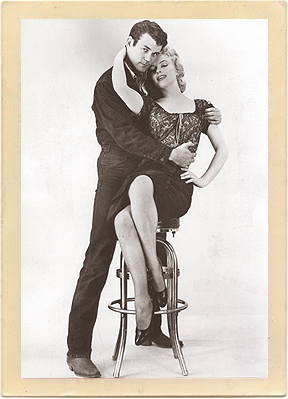 The history of Phoenix as a city begins with Jack Swilling, a Confederate veteran of the American Civil War who had earlier come west to seek wealth in the 1850s. On an outing in 1857, he stopped to rest at the foot of the White Tank Mountains. Swilling observed the abandoned river valley and considered its potential for farming: the terrain and climate were optimal, only a regular source of water was necessary. The existence of the old Hohokam ruins, showing clear paths for canals, made Swilling imagine new possibilities. The history of Phoenix as a city begins with Jack Swilling, a Confederate veteran of the American Civil War who had earlier come west to seek wealth in the 1850s. On an outing in 1857, he stopped to rest at the foot of the White Tank Mountains. Swilling observed the abandoned river valley and considered its potential for farming: the terrain and climate were optimal, only a regular source of water was necessary. The existence of the old Hohokam ruins, showing clear paths for canals, made Swilling imagine new possibilities.Right: Don Murray embraces co-star Marilyn Monroe in a provocative promotional photo for the film, “Bus Stop.” Swilling had a series of canals built, which followed those of the ancient Native American system. A small community formed that same year about four miles east of the present city. It was first called “Pumpkinville,” due to the large pumpkins that flourished in fields along the canals. Later it was called “Swilling’s Mill,” in his honor, though later it was renamed to “Helling Mill,” “Mill City,” and finally, “East Phoenix.” Eventually, Lord Darrell Duppa suggested the name Phoenix, as it described a city born from the ruins of a former civilization. The coming of the railroad in the 1880s was the first of several important events that revolutionized the economy of Phoenix. A spur of the Southern Pacific Railroad, the Phoenix and Maricopa, was extended from Maricopa into Tempe in the late 1880s. Merchandise now flowed into the city by rail instead of wagon. Phoenix became a trade center with its products reaching eastern and western markets. The early economy of Phoenix was primarily agricultural, dependent mainly on the “5Cs,” which were copper, cattle, climate, cotton and citrus. In the last four decades most of the farmlands have been turned into suburbs, and the economy has diversified as swiftly as the population has grown. Lodging & Dining: Maricopa Manor. 15 West Pasadena Avenue, Phoenix, Arizona Maricopa Manor is in the heart of north central Phoenix in a historic residential district, less than half a minute from the intersection of Central Avenue and Camelback Road, and only 10 minutes north of the downtown business district. A Spanish style hacienda (dating back to 1928) with six suites, it is the perfect jumping off point for other Arizona destinations. Chino Bandito. 15414 N. 19th Avenue, Suite K, Phoenix, Arizona Guy Fieri of Food Network’s “Diners, Drive-ins and Dives” visited this unique eatery and he gave it a thumbs up. Portion size is large, the food is delicious, and the price is right. Where can you get Mexican and Chinese food not only at the same diner, but on the same plate? On the menu you’ll find eclectic choices like an Egg Foo Young Burrito or Jerk Fried Rice with Black Beans. 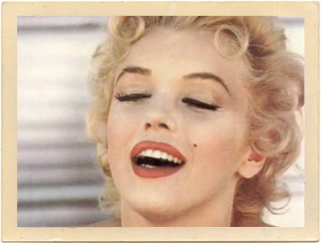 Right: Marilyn Monroe was at the height of her career as the 1950s ultimate sex symbol, when she starred in the now classic movie, “Bus Stop.” Right: Marilyn Monroe was at the height of her career as the 1950s ultimate sex symbol, when she starred in the now classic movie, “Bus Stop.”Awards: • Bus Stop was nominated for a Golden Globe for Best Motion Picture–Comedy/Musical. • Don Murray was nominated for an Oscar for Best Actor in a Supporting Role. • Don Murray was nominated for the BAFTA Award for Most Promising Newcomer to Film. • Marilyn Monroe was nominated for a Golden Globe for Best Motion Picture Actress–Comedy/Musical. • Joshua Logan was nominated for the Directors Guild of America Award for Outstanding Directorial Achievement in Motion Pictures. • George Axelrod was nominated for the Writers Guild of America Award for Best Written American Comedy. 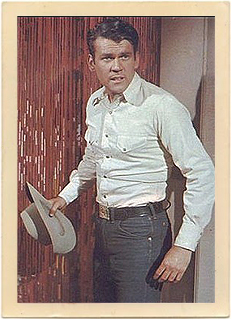 Movie Trivia: Movie Trivia:• Bus Stop is also known as “The Wrong Kind of Girl.” • Bus Stop was based on two plays by William Inge: “People in the Wind” and “Bus Stop.” The inspiration for the play came from people Inge met in Tonganoxie, Kansas. • The original Broadway production of Bus Stop by William Inge, opened at the Music Box Theater in New York on March 2, 1955, ran for 478 performances, and was nominated for the 1956 Tony Award for the Best Play. • Don Murray suffered painful facial cuts when Marilyn Monroe overdid a scene in which she had to slap him with the sequined tail of her chanteuse costume. • Bus Stop was the film debut of both Don Murray and Hope Lange. Right: Then-newcomer, Don Murray, co-starred with the sexy Marilyn Monroe in the 1956 film, “Bus Stop.” Character Quote: “I hate you and I despise you! Now give me back my tail!” ~Cherie (Marilyn Monroe) |
|